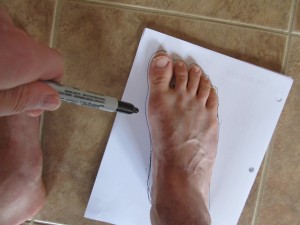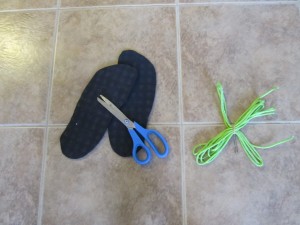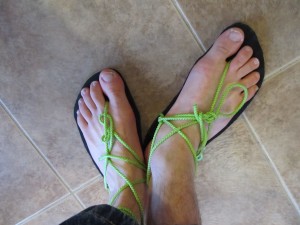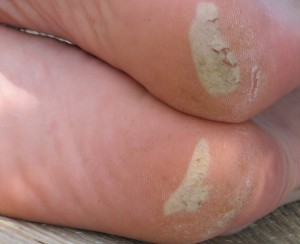One of my all-time favourite books is Chris McDougal’s Born to Run. It’s a wonderful mix of character profiles, meditations on what makes us human, sport’s journalism, and ultra-running.
Like everyone else who read the book, I totally fell in love with the idea of minimalist or barefoot running. Inspired by stories of Kenyan children covering miles to and from school every morning unshod, or the Tarahuma in Mexico travelling up and down mountains in their huarches, I decided that here was the solution to the knee problems that had been plaguing my running career. This was the right way to run. I could become one with the trails I ran on. I could re-discover the joy of feet and road and freedom, without all the modern paraphernalia of motion control, air cushioning, torsion bars and who knows what else.
Well.
I’ve had mixed results.
As it happened, I still completely believe that this is the right way to run. As a result of reading this book, and my painful experiences last year, I re-engineered my gait, and adopted the minimalist philosophy. And it worked – this year I completed my first ever ultra-marathon wearing just a pair of sandals.
But that wasn’t enough for me. Oh no. I decided to go one step further, and make myself a pair of huarches. These are nothing more than a few millimetres of rubber sole tied on to your feet with a length of cord.
A kit from invisibleshoe.com cost me a mere $26, the cheapest pair of shoes I’d ever bought. And I had the fun of making them myself – tracing out my foot on a sheet of paper, cutting out the soles, and threading the cord.
And then I discovered something that wasn’t mentioned in Born to Run.
These shoes will challenge your feet like nothing ever has. Thirty years of running in padding, supported running shoes with thick heels, or even in regular sandals, had in no way prepared me for the abuse my feet were about to take.
I’m quite capable of running a half-marathon before breakfast. But my first run in these gave me huge blisters on my toes that took weeks to heal.
Once the first set of blisters healed, I tried them again. A little trail run down to the lake and back. This gave me a completely new set of blisters, on my heels this time.
So, back to other shoes for a few more weeks. Then, last Wednesday I went out for a little hill training with the folks at the Running Room. I didn’t get blisters that time. I got tendonitis in my heel, instead.
There’s a reason for this. Modern running shoes have a big cushion in the heel that is designed to absorb energy on impact and return it on push-off. But our bodies already have a mechanism to perform this action – it’s the muscles in our calves. But if we don’t train it, and then suddenly ask it to support us as we run uphill on our toes, it’s not surprising that it complains.
So, here I am, sitting with an ice-pack strapped to my ankle and wondering how I can train for Ironman Muskoka when I can’t walk without limping.
But I’m not complaining. I still believe that our bodies are designed to run, and that it’s worth working with our natural biomechanics rather than fighting against them. But we must do this with a certain degree of humility! Our bodies are amazing things that can adapt to incredible demands, but we must approach this kind of training with caution and patience.
I’m not done yet! Just as soon as my ankle heels I’ll be running in huarches again. But just around the block to start with!



